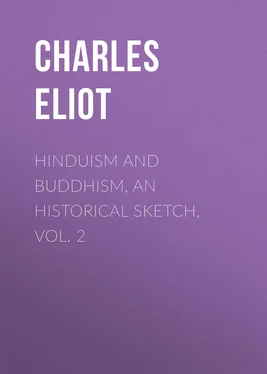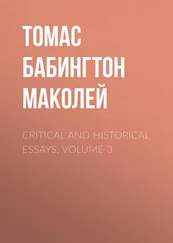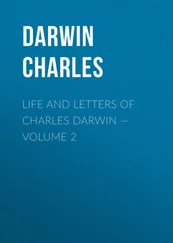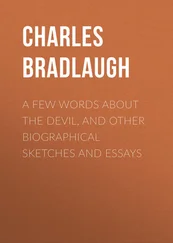For other works attributed to Nâgârjuna see Nanjio, Nos. 1169, 1179, 1180, 1186 and Walleser's introduction to Mittlere Lehre nach der Chinesischen Version The Dharmasangraha, a Sanskrit theological glossary, is also attributed to Nâgârjuna as well as the tantric work Pancakrama. But it is not likely that the latter dates from his epoch.
Nanjio, No. 1188.
The very confused legends about him suggest a comparison with the Dravidian legend of a devotee who tore out one of his eyes and offered it to Śiva. See Grünwedel, Mythologie , p. 34 and notes. Polemics against various Hinayanist sects are ascribed to him. See Nanjio, Nos. 1259, 1260.
Watters, Yüan Chwang , II. p. 286. Hsüan Chuang does not say that the four were contemporary but that in the time of Kumâralabdha they were called the four Suns.
For Asanga and Vasubandhu see Péri in B.E.F.E.O. 1911, pp. 339-390. Vincent Smith in Early History of India , third edition, pp. 328-334. Winternitz, Ges. Ind. Lit. II. i. p. 256. Watters, Yüan Chwang , I. pp. 210, 355-359. Taranâtha, chap. XXII. Grünwedel, Mythologie , p. 35.
Meghavarman. See V. Smith, l.c. 287.
Two have been preserved in Sanskrit: the Mahâyâna-sûtrâlankâra (Ed. V. Transl., S. Lévi, 1907-1911) and the Bodhisattva-bhûmi (English summary in Muséon , 1905-6). A brief analysis of the literature of the Yogâcâra school according to Tibetan authorities is given by Stcherbatskoi in Muséon , 1905, pp. 144-155.
Mahâyâna-sûtrâl. XVIII. 71-73. The ominous word maithuna also occurs in this work, XVIII. 46.
Vincent Smith, l.c. p. 275.
But there are of course abundant Indian precedents, Brahmanical as well as Buddhist, for describing various degrees of sanctity or knowledge.
The wooden statues of Asanga and Vasubandhu preserved in the Kōfukaji at Nara are masterpieces of art but can hardly claim to be other than works of imagination. They date from about 800 A.D. See for an excellent reproduction Tajima's Select Relics , II. x.
See Eitel and Grünwedel, but I do not know in what texts this tradition is found. It is remarkable that Paramârtha's life ( T'oung Pao , 1904, pp. 269-296) does not say either that he was twentieth patriarch or that he worshipped Amida.
On receiving a large donation he built three monasteries, one for Hinayanists, one for Mahayanists and one for nuns.
The work consists of 600 verses (Kârikâ) with a lengthy prose commentary (Bhâshya) by the author. The Sanskrit original is lost but translations have been preserved in Chinese (Nanjio, Nos. 1267, 1269, 1270) and Tibetan (see Cordier, Cat. du Fonds tibétain de la Bib. Nat. 1914, pp. 394, 499). But the commentary on the Bhâshya called Abhidharma-kośa-vyâkhyâ, or Sphuṭârtha, by Yásomitra has been preserved in Sanskrit in Nepal and frequently cites the verses as well as the Bhâshya in the original Sanskrit. A number of European savants are at present occupied with this literature and Sir Denison Ross (to whom I am indebted for much information) contemplates the publication of an Uigur text of Book I found in Central Asia. At present (1920), so far as I know, the only portion of the Abhidharma-kośa in print is De la Vallée Poussin's edition and translation of Book III, containing the Tibetan and Sanskrit texts but not the Chinese (De la Vallée Poussin— Vasubandhu et Yaśomitra , London, 1914-18). This chapter deals with such topics as the structure of the universe, the manner and place of rebirth, the chain of causation, the geography of the world, the duration and characteristics of Kalpas, and the appearance of Buddhas and Cakravartins.
See Nanjio, pp. 371-2, for a list of his works translated into Chinese. Hsüan Chuang's account differs from the above (which is taken from Paramârtha) in details. He also tells a curious story that Vasubandhu promised to appear to his friends after death and ultimately did so, though he forgot his promise until people began to say he had gone to hell.
See Vasilief, Le Bouddhisme , Troisième supplément, pp. 262 ff. Köppen, Rel. des Buddha , I. 151. Takakusu in J. Pali Text Society , 1905, pp. 67-146.
Records , translated by Takakusu, p. 15.
They are mentioned in the Sarva-darśana-saṅgraha.
Kern ( Indian Buddhism , p. 126) says they rejected the authority of the Sûtras altogether but gives no reference.
See Vasilief, pp. 301 ff. and various notices in Hsüan Chuang and Watters. Also de la Vallée Poussin's article in E.R.E.
Hsüan Chuang informs us that when he was in Śrughna he studied the Vibhâshâ of the Sautrântikas, but the precise significance of this term is not plain.
Fa-Hsien's Travels , chap. XVI.
This figure is probably deduced from some artificial calculation of possible heresies like the 62 wrong views enumerated in the Brahma-Jala sûtra.
He must have lived in the fourth century as one of his works (Nanjio, 1243) was translated between 397 and 439.
Watters, Yüan Chwang , II. 221-224. Nanjio, 1237. The works of Guṇamati also are said to show a deep knowledge of the Sânkhya philosophy.
For the history of logic in India, see Vidyâbhusana's interesting work Mediæval School of Indian Logic , 1909. But I cannot accept all his dates.
Diṅnâga's principal works are the Pramâṇa-samuccaya and the Nyâya-praveśa. Hsüan Chuang calls him Ch'en-na. See Watters, II. 209. See Stcherbatskoi in Muséon , 1904, pp. 129-171 for Diṅnâga's influence on the development of the Naiyâyika and Vaiśeshika schools.
His personal name is said to have been P'u-ti-to-lo and his surname Ch'a-ti-li. The latter is probably a corruption of Kshatriya. Hsiang-Chih possibly represents a name beginning with Gandha, but I can neither find nor suggest any identification.
See B.E.F.E.O. 1903, pp. 379 ff.
His evil deeds are several times mentioned by Hsüan Chuang. It required a miracle to restore the Bo tree.
See Ettinghausen, Harshavardhana , Appendix III.
The appearance of Gaurî as a dea ex machina at the end hardly shows that Harsha's Buddhism had a Śâktist tinge but it does show that Buddhists of that period turned naturally to Śivaite mythology.
Harshacarita, chap. VII. The parrots were expounding Vasubandhu's Abhidharma-kośa. Bâṇa frequently describes troops of holy men apparently living in harmony but including followers of most diverse sects. See Kâdambari, 193 and 394: Harshacar. 67.












